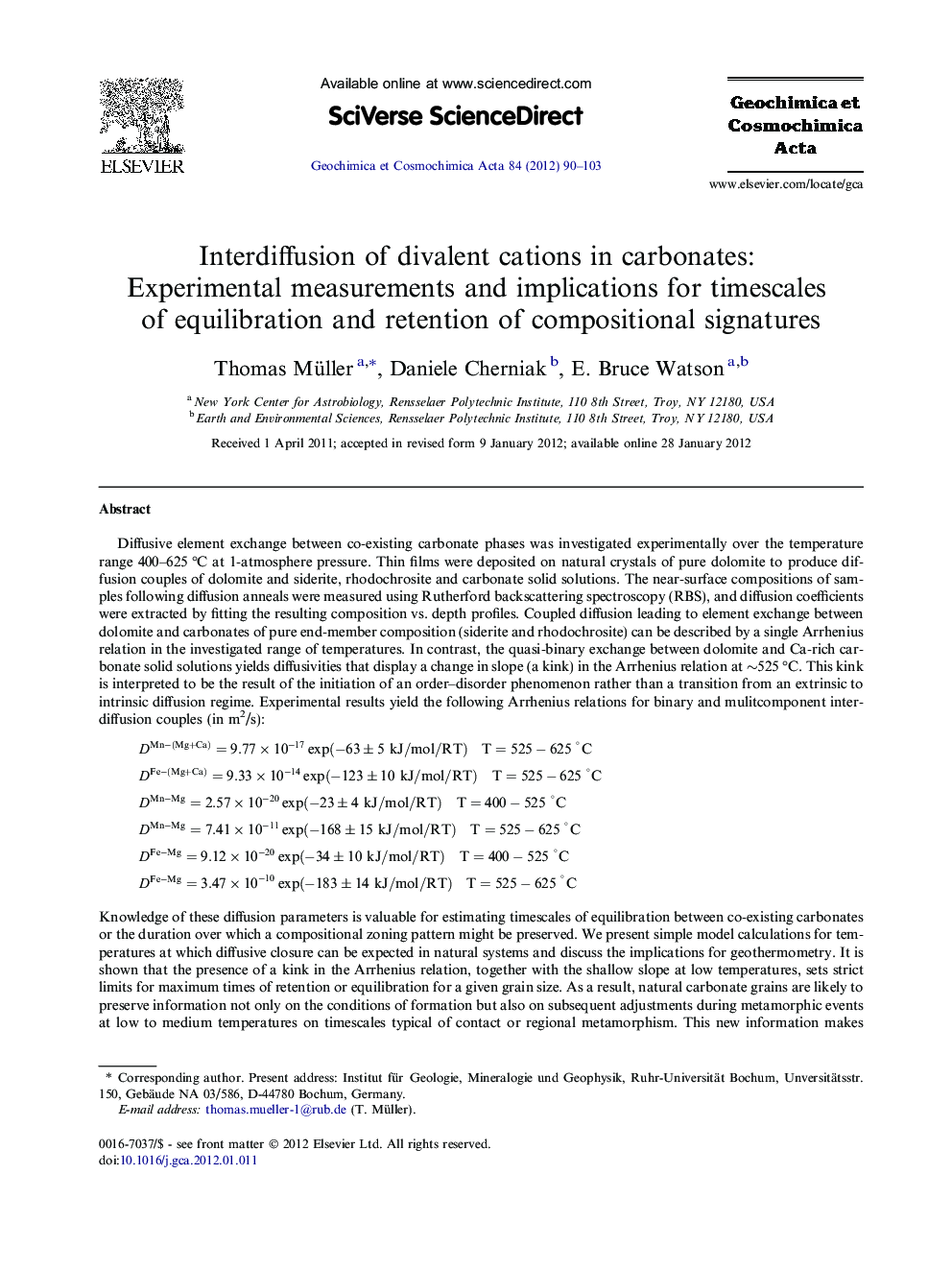| Article ID | Journal | Published Year | Pages | File Type |
|---|---|---|---|---|
| 4702936 | Geochimica et Cosmochimica Acta | 2012 | 14 Pages |
Abstract
Diffusive element exchange between co-existing carbonate phases was investigated experimentally over the temperature range 400-625 °C at 1-atmosphere pressure. Thin films were deposited on natural crystals of pure dolomite to produce diffusion couples of dolomite and siderite, rhodochrosite and carbonate solid solutions. The near-surface compositions of samples following diffusion anneals were measured using Rutherford backscattering spectroscopy (RBS), and diffusion coefficients were extracted by fitting the resulting composition vs. depth profiles. Coupled diffusion leading to element exchange between dolomite and carbonates of pure end-member composition (siderite and rhodochrosite) can be described by a single Arrhenius relation in the investigated range of temperatures. In contrast, the quasi-binary exchange between dolomite and Ca-rich carbonate solid solutions yields diffusivities that display a change in slope (a kink) in the Arrhenius relation at â¼525 °C. This kink is interpreted to be the result of the initiation of an order-disorder phenomenon rather than a transition from an extrinsic to intrinsic diffusion regime. Experimental results yield the following Arrhenius relations for binary and mulitcomponent interdiffusion couples (in m2/s): DMn-(Mg+Ca)=9.77Ã10-17exp(-63±5kJ/mol/RT)T=525-625°CDFe-(Mg+Ca)=9.33Ã10-14exp(-123±10kJ/mol/RT)T=525-625°CDMn-Mg=2.57Ã10-20exp(-23±4kJ/mol/RT)T=400-525°CDMn-Mg=7.41Ã10-11exp(-168±15kJ/mol/RT)T=525-625°CDFe-Mg=9.12Ã10-20exp(-34±10kJ/mol/RT)T=400-525°CDFe-Mg=3.47Ã10-10exp(-183±14kJ/mol/RT)T=525-625°CKnowledge of these diffusion parameters is valuable for estimating timescales of equilibration between co-existing carbonates or the duration over which a compositional zoning pattern might be preserved. We present simple model calculations for temperatures at which diffusive closure can be expected in natural systems and discuss the implications for geothermometry. It is shown that the presence of a kink in the Arrhenius relation, together with the shallow slope at low temperatures, sets strict limits for maximum times of retention or equilibration for a given grain size. As a result, natural carbonate grains are likely to preserve information not only on the conditions of formation but also on subsequent adjustments during metamorphic events at low to medium temperatures on timescales typical of contact or regional metamorphism. This new information makes major and trace-element composition in carbonates a promising candidate for deciphering kinetically-controlled processes-including crystal growth, metamorphic overprint and the rates and durations of these phenomena.
Related Topics
Physical Sciences and Engineering
Earth and Planetary Sciences
Geochemistry and Petrology
Authors
Thomas Müller, Daniele Cherniak, E. Bruce Watson,
